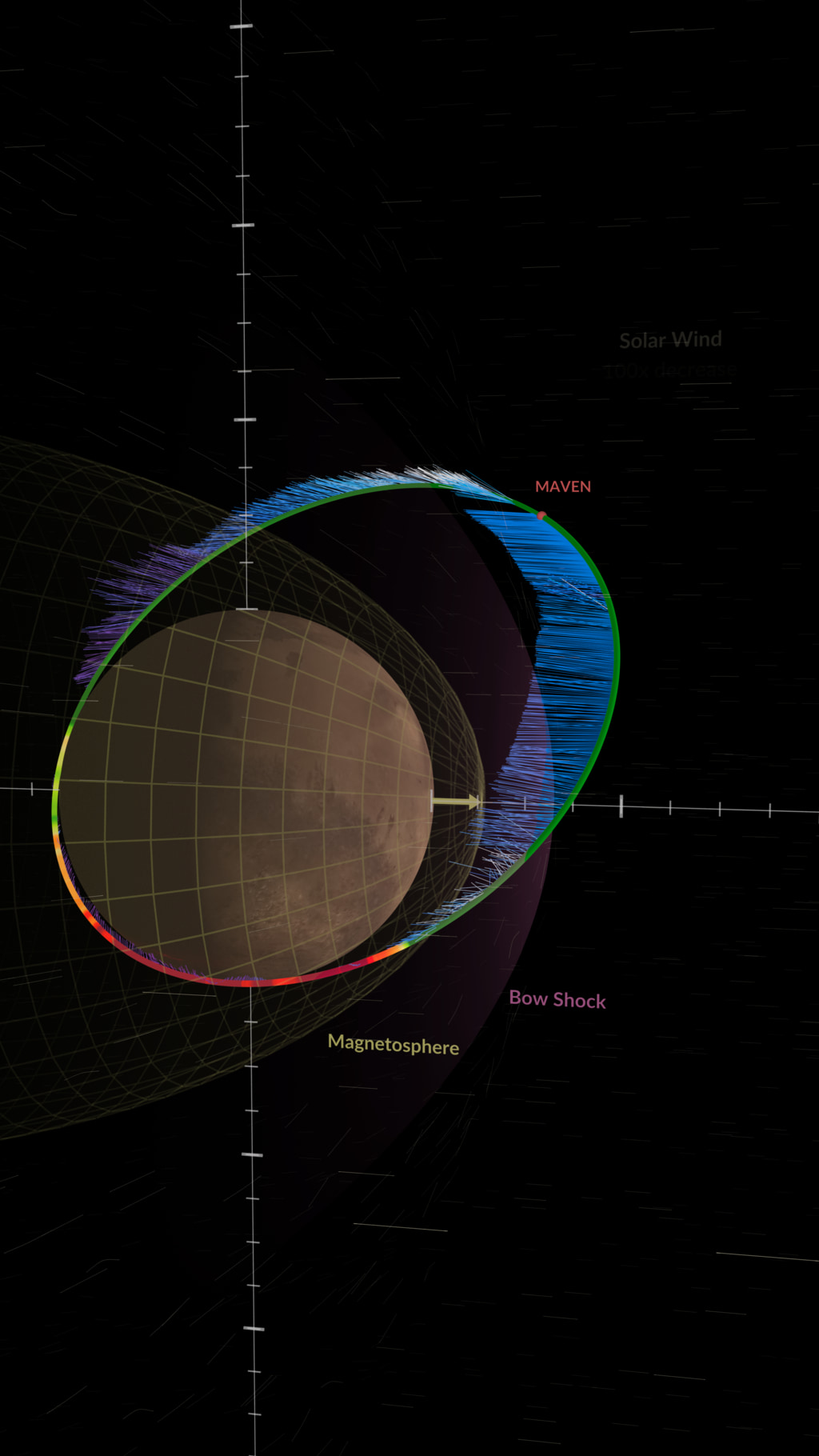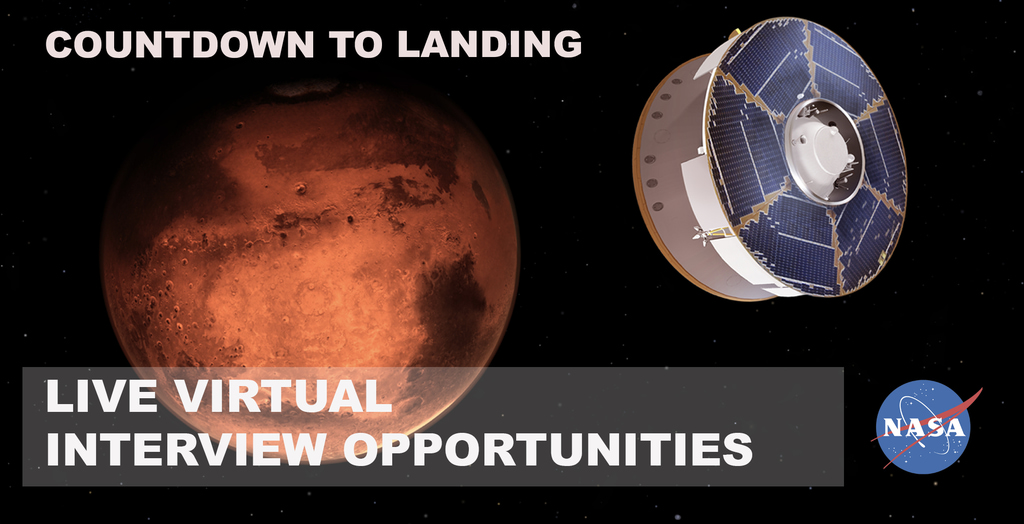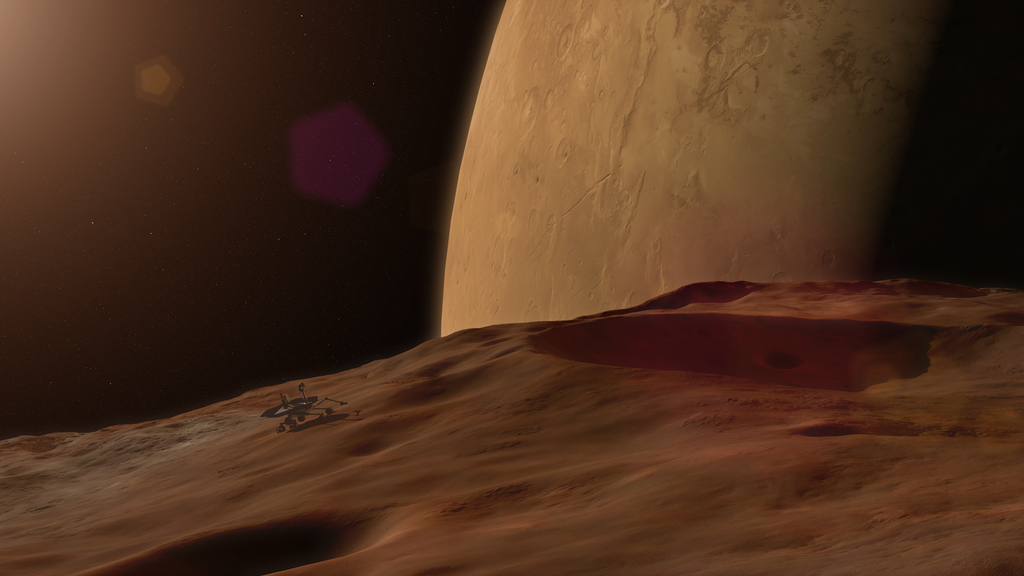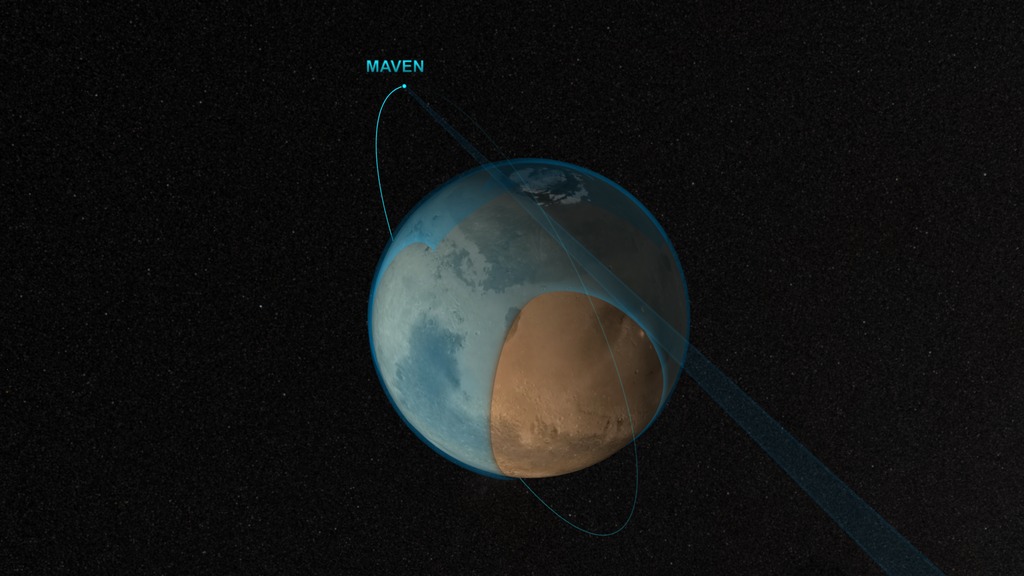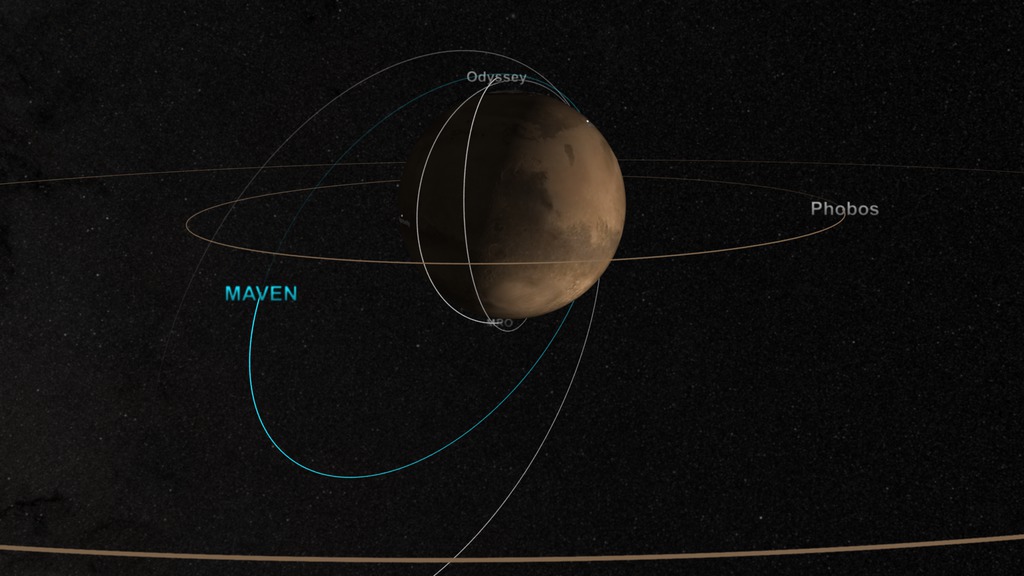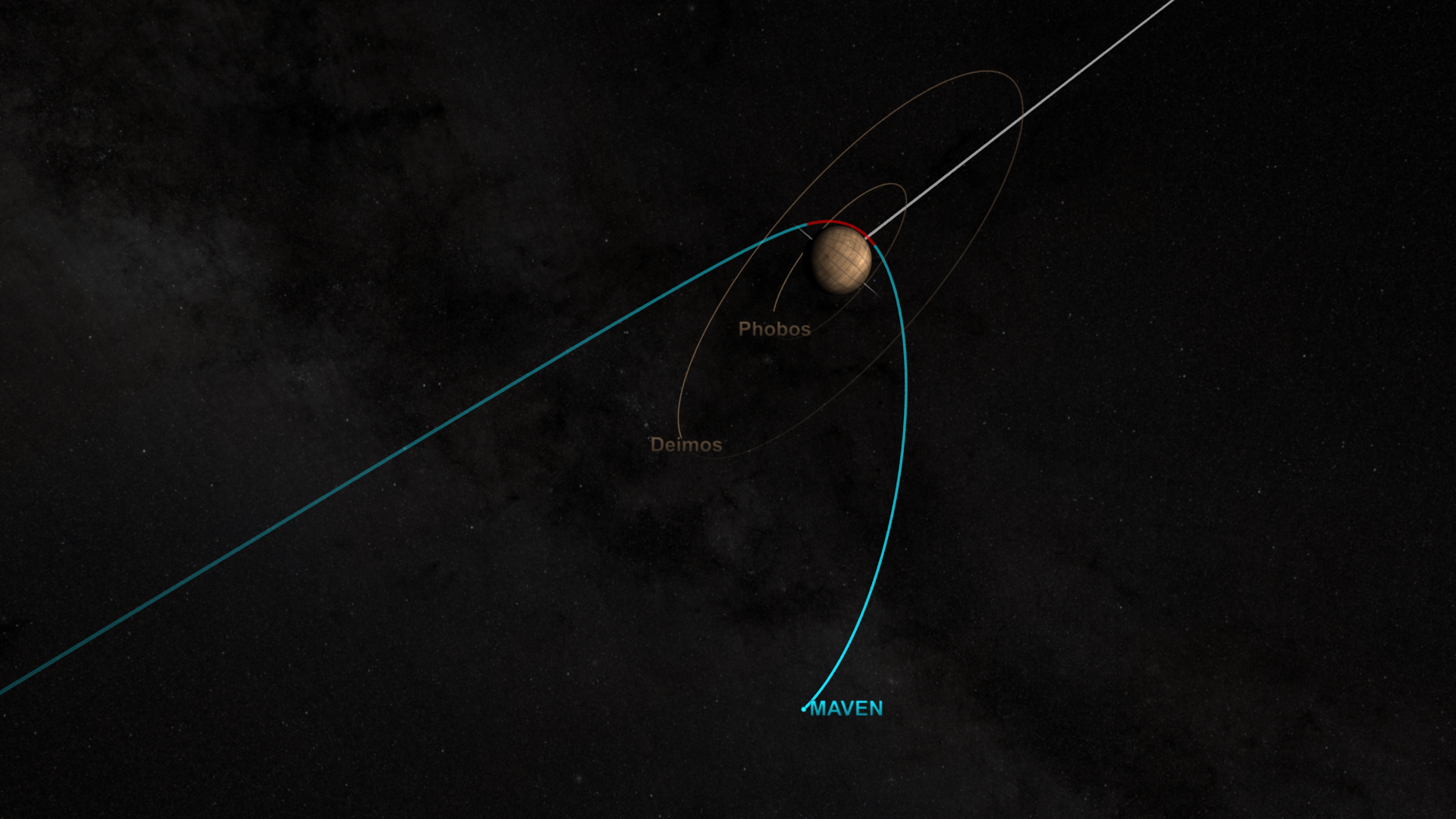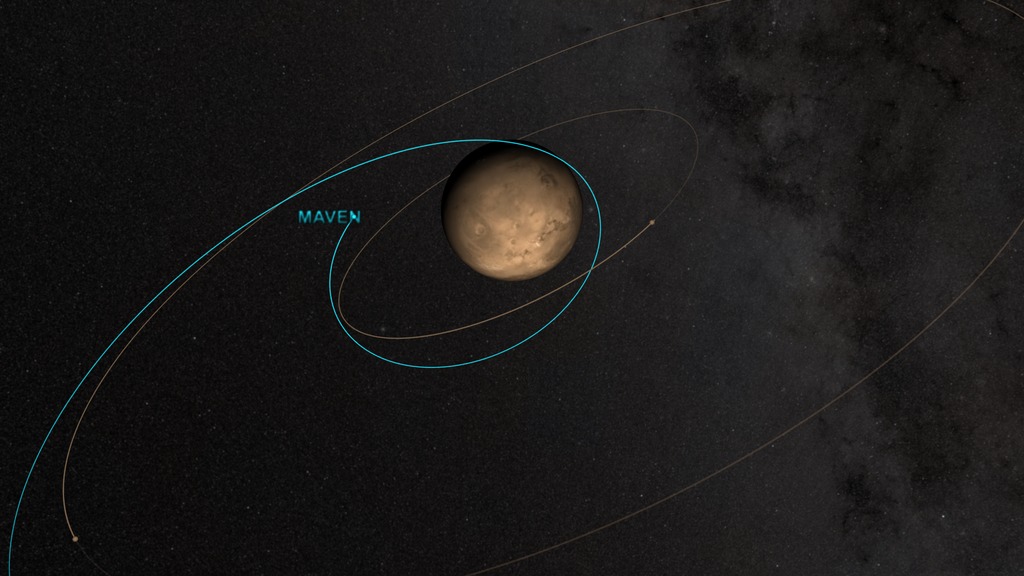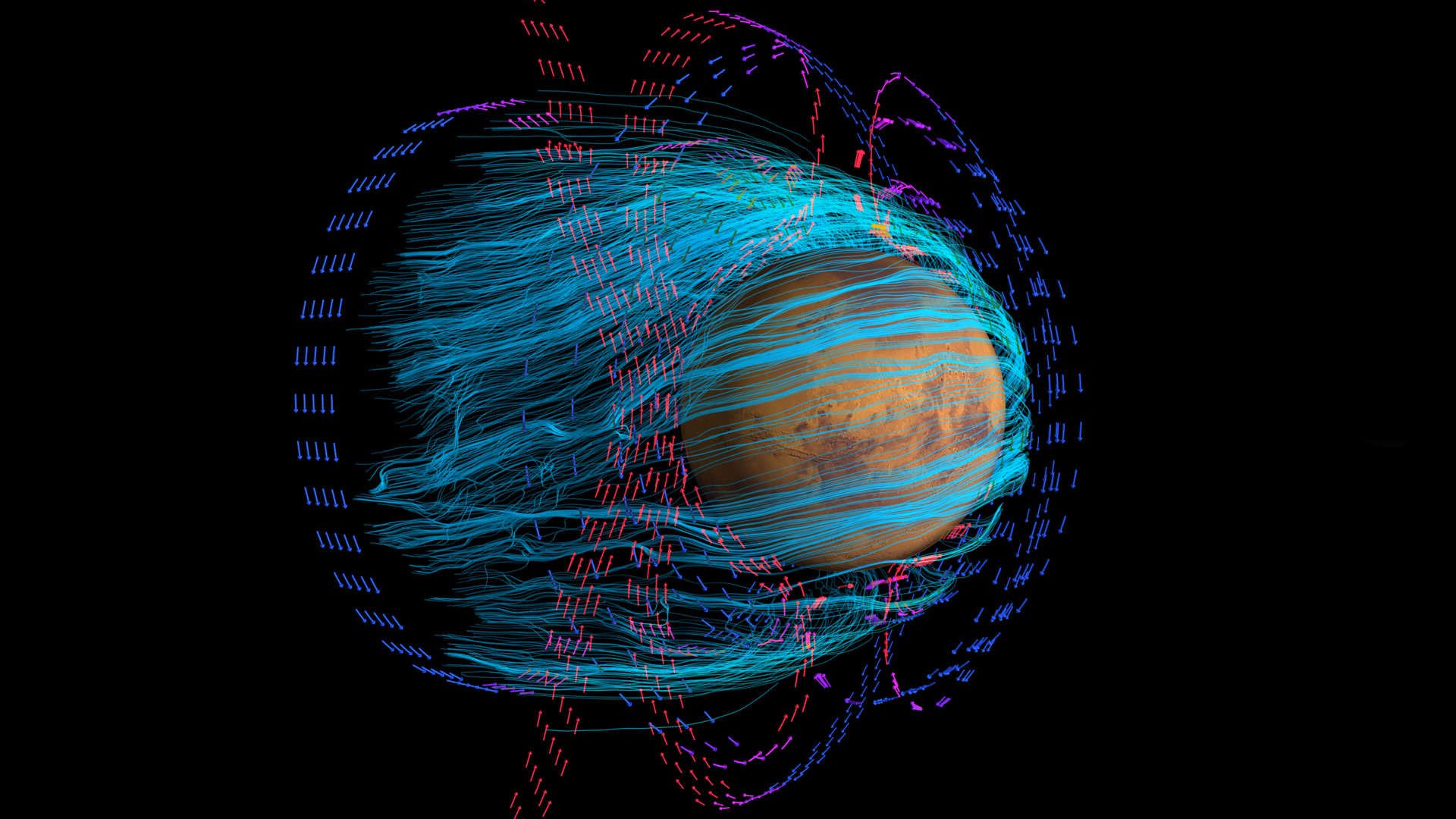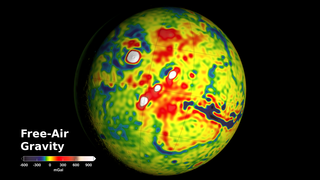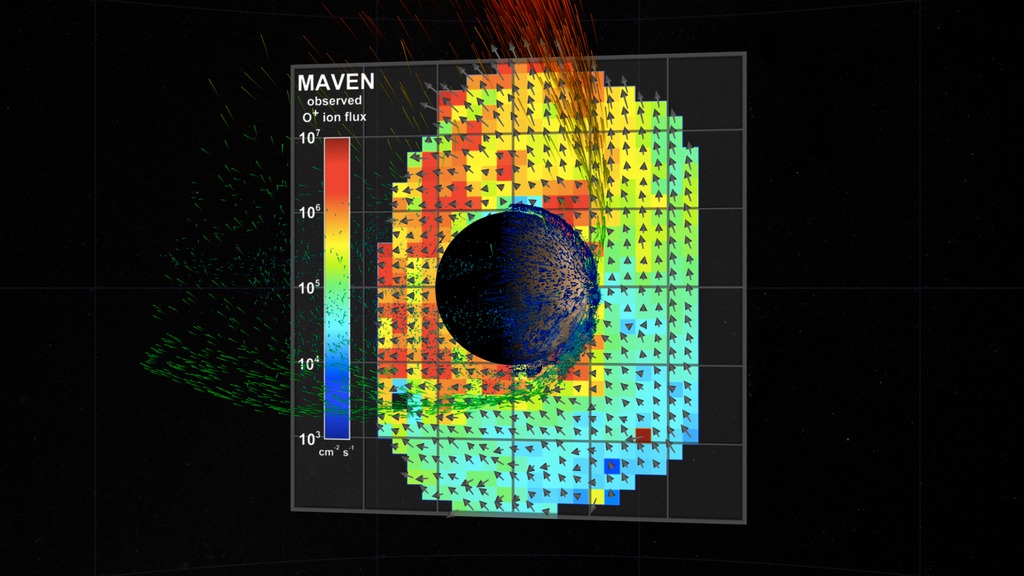The Mars Fleet
A fleet of landers, rovers, and orbiters is exploring the Red Planet, providing mission controllers with a remote presence on Mars. This visualization is available for download in 4K Ultra HD.
A fleet of robotic spacecraft is exploring the Red Planet, sending back an ever-growing flood of data. While rovers like Curiosity blaze tracks through the fine Martian soil, orbiters like MAVEN and MRO circle high overhead, gazing down at the planet's atmosphere and surface and relaying ground-based data back to Earth. The Mars fleet is providing mission controllers at NASA, the European Space Agency, and the Indian Space Research Organisation with a remote presence on Mars.
This visualization shows the landing sites of NASA's past and present landers and rovers; the nearly circular orbits of NASA's Mars Odyssey and Mars Reconnaissance Orbiter; the elliptical orbits of NASA's MAVEN satellite and ESA's Mars Express; and the highly elliptical path of ISRO's Mars Orbiter Mission. The orbits of Mars' two moons, Phobos and Deimos, are also depicted.
Learn more about NASA's Mars Exploration Program.
Alternate version, beginning wide on the Mars Fleet and ending closer on MAVEN's orbit. This version does not include the landers. Available for download in 4K Ultra HD.
For More Information
See NASA.gov
Credits
Please give credit for this item to:
NASA's Scientific Visualization Studio
-
Visualizers
-
Greg Shirah
(NASA/GSFC)
-
Ernie Wright
(USRA)
-
Greg Shirah
(NASA/GSFC)
-
Producer
- Dan Gallagher (USRA)
Missions
This page is related to the following missions:Series
This page can be found in the following series:Datasets used
-
JPL/Horizon Orbital Ephemerides
ID: 597Planetary ephemerides
This dataset can be found at: http://ssd.jpl.nasa.gov/?horizons
See all pages that use this dataset
Note: While we identify the data sets used on this page, we do not store any further details, nor the data sets themselves on our site.
Release date
This page was originally published on Monday, March 21, 2016.
This page was last updated on Sunday, January 5, 2025 at 10:58 PM EST.
